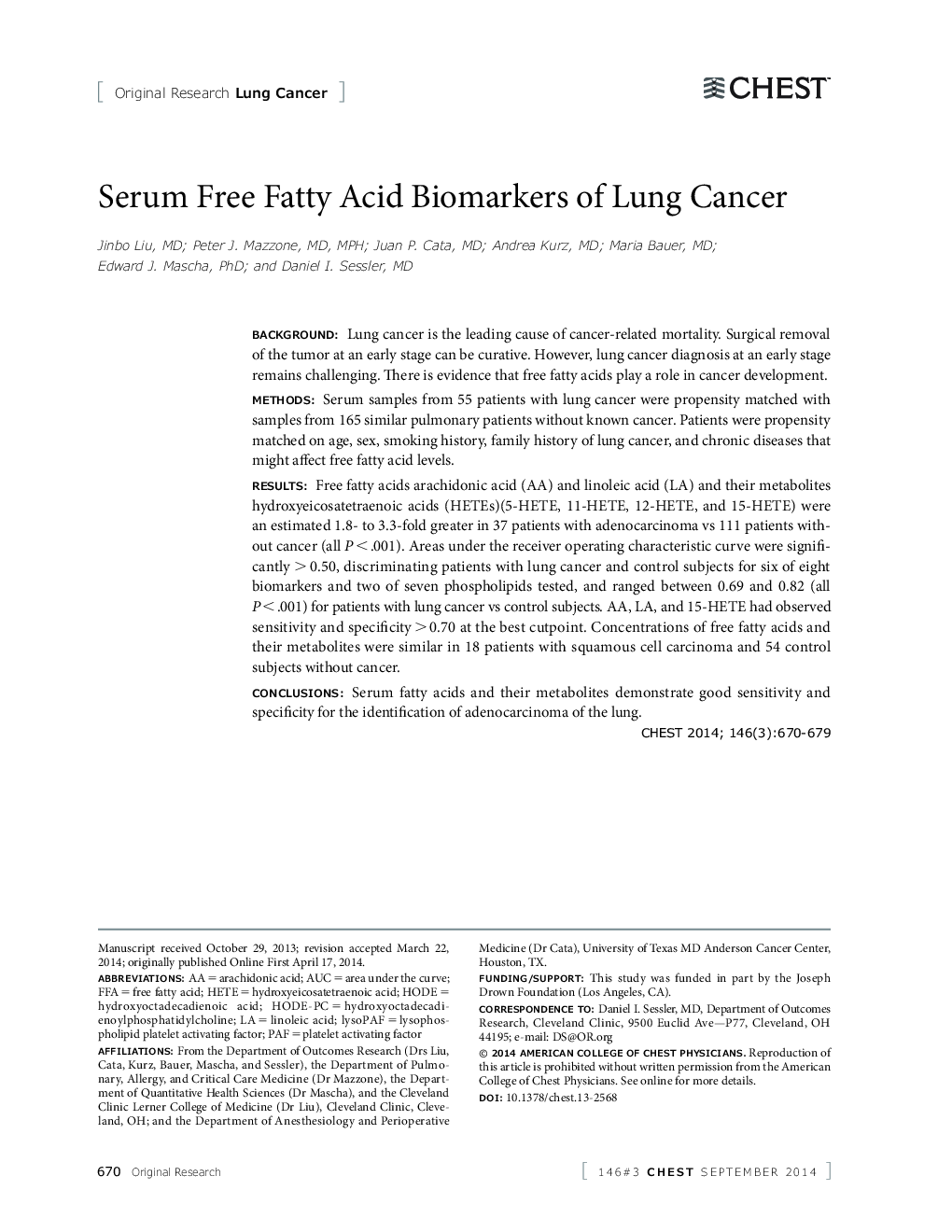| Article ID | Journal | Published Year | Pages | File Type |
|---|---|---|---|---|
| 2899834 | Chest | 2014 | 10 Pages |
BACKGROUNDLung cancer is the leading cause of cancer-related mortality. Surgical removal of the tumor at an early stage can be curative. However, lung cancer diagnosis at an early stage remains challenging. There is evidence that free fatty acids play a role in cancer development.METHODSSerum samples from 55 patients with lung cancer were propensity matched with samples from 165 similar pulmonary patients without known cancer. Patients were propensity matched on age, sex, smoking history, family history of lung cancer, and chronic diseases that might affect free fatty acid levels.RESULTSFree fatty acids arachidonic acid (AA) and linoleic acid (LA) and their metabolites hydroxyeicosatetraenoic acids (HETEs)(5-HETE, 11-HETE, 12-HETE, and 15-HETE) were an estimated 1.8- to 3.3-fold greater in 37 patients with adenocarcinoma vs 111 patients without cancer (all P< .001). Areas under the receiver operating characteristic curve were significantly > 0.50, discriminating patients with lung cancer and control subjects for six of eight biomarkers and two of seven phospholipids tested, and ranged between 0.69 and 0.82 (all P< .001) for patients with lung cancer vs control subjects. AA, LA, and 15-HETE had observed sensitivity and specificity > 0.70 at the best cutpoint. Concentrations of free fatty acids and their metabolites were similar in 18 patients with squamous cell carcinoma and 54 control subjects without cancer.CONCLUSIONSSerum fatty acids and their metabolites demonstrate good sensitivity and specificity for the identification of adenocarcinoma of the lung.
